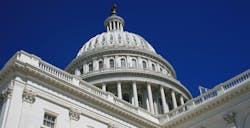Medicare payments for clinical laboratory services have long been a target for cost savings. The Medicare Clinical Laboratory Fee Schedule (CLFS) was introduced in 1984 and was based on a percentage of the median of test prices surveyed in 1982. The Medicare SGR (Sustainable Growth Rate) legislation was enacted in 1997 with the intent to reduce Medicare reimbursements annually. Successful lobbying by physician groups halted reductions in physician fee levels and replaced them with increases. The SGR law mandated overall reduction and, in order to pay for the “doc fix,” savings needed to be found elsewhere. The clinical laboratory represents only 1.6 percent of Medicare spending but has routinely been levied spending cuts to fund the SGR disparity. The Accountable Care Act (ACA), sequestration and the Middle Class Tax Relief & Job Creation Act of 2012 combined to produce a vastly disproportionate reduction in laboratory reimbursement compared to other providers. For the first time in 30 years, CMS invoked its presumed authority to call for the re-pricing of all tests based on new technology. Certain laboratory associations negotiated for repeal of this approach and claimed success when it was replaced by section 216 of the Patient Access and Medicare Protection Act (PAMA) in 2014. This statute called for a market based CLFS, and the rules that followed established a weighted median of individual private payor test reimbursements reported by “Applicable Laboratories.”
The narrow definition of an Applicable Laboratory excludes hospital laboratories but includes 45 percent of all commercial and five percent of physician office laboratories. This results in data heavily weighted by discounted pricing by large commercial laboratories to major payors. The presumption is that the product of these calculations would yield market-based prices significantly lower than the current CLFS. Beginning in January 2018, existing prices would be lowered 10 percent each year for the first three years and 15 percent for the next three years or until the established weighted median price is reached. This could result in a 55 percent drop in payment in six years. A $3.91 billion savings to the Medicare program is projected in the first five years. These fees will be applied to all who are paid on the CLFS and will likely extend to private payors who pay using a function of the CLFS.
The Office of the Inspector General (OIG) has released the September 2017 analysis of Medicare payments for the clinical laboratory. It shows that reimbursements dropped $200 million in 2016 compared to both of 2014 and 2015. This, combined with the projected decrease of $670 million in 2018, will produce a reduction of $870 million. These changes far exceed the goals anticipated when PAMA was enacted.
The new fee schedule
The proposed 2018 CLFS was published on September 22, 2017, with a comment period ending October 23, 2017. The following analysis reveals major concerns and inconsistencies:
- CMS calculations would have resulted in an actual decrease in payment in 2018 of 21.9 percent if not for the 10 percent limit of decrease the first year. The decreases can be a bit deceiving. Almost all of the top 25 volume tests by revenue are decreasing by 10 percent. This will have a larger impact on laboratories than will lower-volume, high-priced tests going down by 10 percent.
- 1,942 labs reported with over 4.9 million lines of records. The OIG 2015 payment review states that there are 61,040 laboratories paid on the CMS CLFS, which means that only 3.2 percent reported data.
° Only 21 hospital labs reported, resulting in only 1.0 percent of data submitted.
° 1,106 physician office laboratories (POLs ) were 7.5 percent of the data.
° Only 36 labs were situated in rural areas. - There are 1,360 codes listed.
° 75 percent of the codes will have a fee decrease. 58 percent of those have more than a 10 percent decrease and will be phased in over the next six years.
° 53 are going down by 50 percent or more, 826 are going down between 10 percent and 49 percent, 115 are going down between 0 and 10 percent, and 134 codes have an increased fee.
° 232 codes have no National Limitation Amount (NLA). Fourty-four of those have an NLA of $0.00. Any code that does not have an NLA is going directly to the full decrease the first year. Two examples: 1) Lipid profile 80061 is a top 25 test and the average 2017 fee is $17.86. The annual phased-in fees would have been $16.07, $14.46, $13.02, and, in 2021, $11.23. Because it has no NLA ,the price is dropping to $11.23 in 2018 for a decrease of 37 percent; and 2) The acute hepatitis panel 80074 had an average CLFS fee in 2017 of $64.04 but will drop to $38.74 in 2018, for a 40 percent decrease. - The drug screen codes are missing market prices because the codes have changed since the data reporting period and several are on the top 25 test list.
- The G0480 definitive drug code goes from $117.65 to $47.96.
- Some of the data is obviously wrong. Code 81341 has a submitted minimum price of $0.01.
- The biggest price drop is for 81435, which goes from $801.33 to $37.99 over the phase-in period.
- There are 93,728 lines submitted for CBC, and 1,536 labs reported a price of less than $0.25! On the other hand, there are 813 laboratories that reported a reimbursement over $100.
Current activity
Concerned organizations and individuals have contacted the CMS Administrator, Seema Verma, and legislators. Those requests take several forms to include an additional postponement and the expansion of the Applicable Laboratory definition in an attempt to include hospital or hospital laboratory outreach data. Curiously, since the passage of PAMA, most hospital laboratory payments made using the CLFS have shifted to the bundled Hospital Outpatient Prospective Payment System (OPPS) and are no longer being paid from the CLFS. Additionally, the OPPS payment offset adjustment by CMS for those bundled laboratory tests has been estimated by the American Hospital Association as being two-thirds too low to account for the increased testing costs. Inclusion of hospital laboratory data would likely not be significant, but generating and reporting the data would cause a major burden on hospitals.
On August 2, 2017, representatives from the Clinical Laboratory Management Association (CLMA), American Medical Association (AMA), American Osteopathic Association (AOA), American Academy of Family Physicians (AAFP), Commission on Laboratory Accreditation (COLA), and American Society of Clinical Oncology (ASCO) held a meeting with the House Energy and Commerce Committee, which shares jurisdiction over the PAMA statute. They met with James Paluskiewicz, Chairman Greg Walden’s committee staffer, and Una Lee, Ranking Member Frank Pallone’s committee staffer. They are the top committee staffers on this issue and have direct lines to the chair and ranking member. On September 7, 2017, this same coalition met with Senate Finance Majority and Minority staffers Brett Baker and Beth Vrabel.
The main “ask” was to require CMS to issue an Interim Final Rule with a comment period. CMS should, in a transparent manner, be compelled to validate the reported data results and adjust the CLFS before implementation. Concern was expressed that the CMS data collected was inaccurate, skewed, and incomplete and did not meet the intent of the statute, which was to have a market-based approach. Additionally it was pointed out that a drastic cut in testing reimbursement would ultimately reduce access for Medicare beneficiaries and others requiring laboratory services. As the economies of testing shift, the numbers of laboratories would decrease and testing laboratory menus would be reduced locally, which would result in delayed testing and subsequent treatment and ultimately cost the Medicare program and other insurers more due to the need of treating a higher acuity patient.
Additional observations
Implementation of the PAMA section 216 will take place and the new CLFS will go into effect in January 2018. Clearly, this price fixing by CMS will fall below cost in many circumstances and precipitate a feeding frenzy by other payors. That will result in even lower medians for the next iteration of reporting and fee setting. Publicly owned laboratories have sustained a major slump in stock prices as an initial reaction. Community laboratories will be required to maintain service levels near to their patients with less revenue from all sources.
The Medicare Access and CHIP Reauthorization Act of 2015 (MACRA) introduced two Quality Payment Program (QPP) pathways, a Merit-Based Incentive System (MIPS) and Advanced Alternative Payment Models (AAPMs). The Act also repealed the SGR legislation. Under MACRA a provider’s participation in incentive payments will be based on performance in three categories: quality, advancing clinical information, and clinical practice improvement. Labs can play a key role in all of these initiatives.
In an environment where laboratory reimbursements are being eliminated or diminished, it is incumbent on lab leaders to engage with physicians and demonstrate the value of the laboratory in terms of patient care benefits and reduced aggregate cost of care rather than billed procedures.
Rodney W. Forsman, BS, is Assistant Professor Emeritus of Laboratory Medicine and Pathology, College of Medicine, Mayo Clinic, CLMA Legislative Compliance and Regulatory Committee (LCRC) Member.
Tim Murray, MS, MT(ASCP), serves as CHI National Director of Laboratory Compliance and Corporate Responsibility, LCRC Chair.
Paul Keoppel, MBA, MT(ASCP), serves as LCRC Member, Keoppel Laboratory Consulting, LLC.

